As our NFL Combine Training program gets started, it is always exciting for me to get to know and help a group of talented, motivated athletes. It’s also a time that makes me examine athlete development in a different way.
Most coaches discuss athlete development in terms of working with young athletes in an effort to help them prepare for the future. With these guys, I get to look at the process backward and evaluate what they may have missed at some point in their development. So, it’s amazing to see these guys in the morning, watch 8-year-olds in the evening, and think about everything that happens in the years between.
Through the years, I’ve seen some interesting trends, and the training we do with the older guys always helps us train younger athletes more effectively because we have a chance to “look into the crystal ball” a little and see what they will need as they get older.
Sometimes you’ll hear coaches say things like “If he had used my methods, he would have been so much better.” I don’t look at it like this at all. So many things go into athlete development, that we don’t know exactly what would have happened if their training was different.
So, without judgment, I simply notice some trends in these guys that help me do a better job with younger athletes in an effort to clear up some issues before they are a problem down the road. While many of these guys will play professional sports, their development isn’t always as pretty as you’d expect.
Four things that I have noticed are:
- Misunderstanding of strength & size
- Lack of attention to movement quality
- Lack of attention to flexibility/mobility
- Under-appreciation for recovery
What’s interesting about this is the fact that we, as coaches, can help younger athletes avoid these errors before they become a problem. Let me briefly address each area so you understand what I’m thinking:
Misunderstanding of strength & size
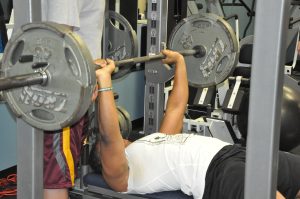 Many high school and college-level athletes feel like they either need to get as big and strong as possible or they don’t value it at all. Some of that depends on the sport they play, and some depends on their environment or what their coaches value. We need to help athletes put strength/size into perspective, and teach them that these qualities should be developed as a PART of their overall development. In some cases, it’s a small part, and in other cases, it’s more important. But, concentrating ALL of your effort on lifting weights if usually not what athletes need.
Many high school and college-level athletes feel like they either need to get as big and strong as possible or they don’t value it at all. Some of that depends on the sport they play, and some depends on their environment or what their coaches value. We need to help athletes put strength/size into perspective, and teach them that these qualities should be developed as a PART of their overall development. In some cases, it’s a small part, and in other cases, it’s more important. But, concentrating ALL of your effort on lifting weights if usually not what athletes need.
Don’t get me wrong, MANY athletes lack strength, so they need to make this priority. But, many others simply don’t understand how strength training fits into a comprehensive athlete development program, and it’s our job to teach them.
Lack of attention to movement quality
I’m always surprised at how few elite level athletes have gotten much coaching on the way they move. They often haven’t been taught footwork, running technique, or posture, and it’s incredibly rare to meet an athlete who has been coached on their overall quality of movement.
We spend a ton of time teaching acceleration and sprinting mechanics as we work on the 40-yard dash. In many cases, this is the first time they’ve ever gotten this kind of in-depth instruction.
We also give them feedback on the way they look when they move because scouts want to see fluid athletes who can move through space effortlessly. This is about footwork, posture, and the subjective qualities that make them appear to be more or less athletic. I’m talking about things like taking too many choppy steps, heavy feet, rounded backs, flailing arms, or robotic movements. These qualities need to be taught at an early age so athletes feel more natural moving this way. Trying to teach 23-year-olds how to change this in six weeks is not ideal.
This always makes me realize how important it is for us to teach kids these things when they’re younger, and I hope you do the same.
Lack of attention to flexibility/mobility
College coaches tell me all the time that their athletes come in stiff, and they wish there was more of a focus on flexibility/mobility in high school. Then, I hear high school coaches talk about how tight their kids are, and they wish they would have done something about it earlier.
I see the same thing when training guys for the NFL – a lot of athletes simply don’t give enough attention to this.
So, we need to recognize this pattern and make sure we spend enough time keeping athletes mobile and supple. That doesn’t mean we need to turn kids into contortionists, but flexibility/mobility should be a part of every program. Whether that comes in the form of quality strength training, movement training, or direct flexibility/mobility work is up to you, but make this a priority before it’s a problem that affects everything they do.
Under-appreciation for recovery
Athletes often think that more is better and they believe that they can handle much higher volumes than they should. They rarely take recovery seriously. Instead, they have poor diets and severely lack sleep. The combination of high-volume training and poor recovery is a recipe for disaster.
Sometimes that disaster is obvious and athletes get sick or hurt. More often, it’s discreet and manifests itself as a lack of progress. Athletes train, train, train, but never get the results they desire because they simply don’t understand that recovery is the key to progress.
Athletes usually think that the stimulus (i.e. training) is where are of the gains take place. They don’t realize that the stimulus is simply a way to get their bodies to adapt and improve during recovery. Without adequate recovery, the stimulus won’t elicit great results.
We need to teach athletes the value of recovery, and how to schedule their training to maximize the results. We also need to teach them that all activity dips into their recovery, so their practice schedule, individual skill lessons, physical education classes, and performance training all need to be considered together not by themselves.
I hear athletes say it all the time – “I’m OK. I can do more.”
Yes, I know you CAN do more, but that doesn’t mean it’s going to be helpful. Trust me, I’d rather have an athlete want to do more than one who doesn’t do anything, but motivated athletes just keep doing more until there is a problem. We can teach them the value of appropriate scheduling and how to maximize their recovery.
There are many things that go into athlete development, so I find it fascinating to examine the process from the top down just as much as from the bottom, up. We will always need to give young athletes variety, teach them a love for moving, and give them quality training at the right times throughout their development. Hopefully, understanding these trends will help you create programs that allow athletes to avoid these issues and become the best versions of themselves as they develop.
 Jim Kielbaso
Jim Kielbaso is the President of the IYCA and owner of
Impact Sports Performance in Novi, Michigan. He has authored multiple books, articles and training products and has spoken at events around the world. He holds a BS in Exercise Science, an MS in Kinesiology and has gone through multiple certifications through the IYCA, NSCA, NASM and more. Jim is a former college strength & conditioning coach and has trained thousands of athletes at every level of competition. He runs a successful
NFL Combine training program in Michigan and has been hired as a consultant for major sports programs like the University of Michigan Football Program and the University of Kentucky Basketball Program.
The IYCA Certified Athletic Development Specialist is the gold-standard certification for anyone working with athletes 6-18 years old. The course materials were created by some of the most experienced and knowledgeable professionals in the industry, and the content is indisputably the most comprehensive of any certification related to athletic development. Learn more about the CADS certification here:
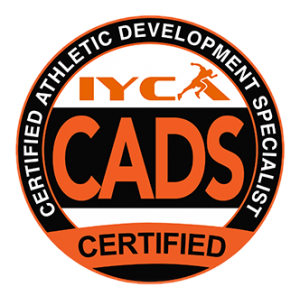
 Athletic development across the lifespan is a complex process that is heavily influenced by the cognitive and physical maturity of the individual. Unfortunately, conditioning and fitness programming for the developing athlete have most often been designed around routines initially intended for adult and elite level athletes.
Athletic development across the lifespan is a complex process that is heavily influenced by the cognitive and physical maturity of the individual. Unfortunately, conditioning and fitness programming for the developing athlete have most often been designed around routines initially intended for adult and elite level athletes.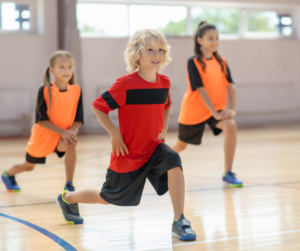 Developing the fundamental movement skills (e.g., walking, running, and jumping) happens early on in a child’s life. Unfortunately, being unable to perform fundamental movement skills can restrict later opportunities, which is why it is vital to develop physical literacy early in the child’s life.
Developing the fundamental movement skills (e.g., walking, running, and jumping) happens early on in a child’s life. Unfortunately, being unable to perform fundamental movement skills can restrict later opportunities, which is why it is vital to develop physical literacy early in the child’s life. 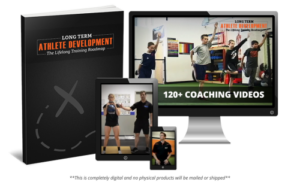 The very first step in any effort towards change, is to gain education. Our Long Term Athlete Development Roadmap is the perfect place to start or enhance your current knowledge.
The very first step in any effort towards change, is to gain education. Our Long Term Athlete Development Roadmap is the perfect place to start or enhance your current knowledge.  It is no secret that the development of the young athlete is multifaceted and it is the responsibility of the coach and/or trainer to take into consideration developmental, physical, and psychological aspects of training.
It is no secret that the development of the young athlete is multifaceted and it is the responsibility of the coach and/or trainer to take into consideration developmental, physical, and psychological aspects of training. 
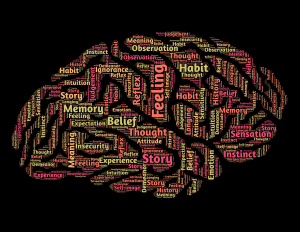
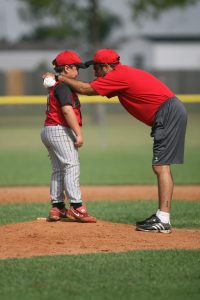 What motivates you as a coach? Consider the aspects of coaching that have made you voluntarily go above and beyond. What gets you excited? What pulls you to give everything you have to your athletes?
What motivates you as a coach? Consider the aspects of coaching that have made you voluntarily go above and beyond. What gets you excited? What pulls you to give everything you have to your athletes? Brett Klika is a youth performance expert and a regular contributor to the IYCA who is passionate about coaching young athletes. He is the creator of the
Brett Klika is a youth performance expert and a regular contributor to the IYCA who is passionate about coaching young athletes. He is the creator of the 

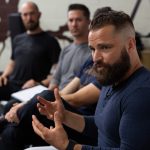 Brett Bartholomew is a strength and conditioning coach, author, consultant, and Founder of Art of Coaching™. His experience includes working with athletes both in the team environment and private sector along with members of the United States Special Forces and members of Fortune 500 companies.
Brett Bartholomew is a strength and conditioning coach, author, consultant, and Founder of Art of Coaching™. His experience includes working with athletes both in the team environment and private sector along with members of the United States Special Forces and members of Fortune 500 companies.
 way we consume information about strength and conditioning, and it’s probably not the best way for us to make decisions.
way we consume information about strength and conditioning, and it’s probably not the best way for us to make decisions. We see something on Instagram from someone with a bunch of followers, and we instantly think it must be the truth instead of digging deeper, doing our own research and getting the whole story. So, whether it’s politics or strength & conditioning, it’s important to get the whole story before you make a decision.
We see something on Instagram from someone with a bunch of followers, and we instantly think it must be the truth instead of digging deeper, doing our own research and getting the whole story. So, whether it’s politics or strength & conditioning, it’s important to get the whole story before you make a decision. sources of information. Of course, I use social media, but I also go to scientific journals, I take courses, I have multiple degrees, I read lots of books, I attend conferences, and I go to people who have many years of experience in the industry who put out quality information and who are in the trenches daily. These people have been doing it for years, documenting the results, analyzing their experiences and their programs, and then making decisions based on those analytics.
sources of information. Of course, I use social media, but I also go to scientific journals, I take courses, I have multiple degrees, I read lots of books, I attend conferences, and I go to people who have many years of experience in the industry who put out quality information and who are in the trenches daily. These people have been doing it for years, documenting the results, analyzing their experiences and their programs, and then making decisions based on those analytics. Along with the effectiveness of a training stimulus, you have to weigh the risk vs. benefit to help determine whether it’s the right choice to include in a program. For example, when I see kids standing on stability balls or doing circus tricks, I feel like the training benefit is incredibly small while the risk is fairly high. Or, I’ll see kids stacking a bunch of plates up on top of boxes to see how high they can jump. Again, the training benefit of jumping onto a box is no greater than jumping in the air as high as you can and landing on the ground, but the risk is MUCH greater. So, I personally don’t feel like the risk outweighs the benefit.
Along with the effectiveness of a training stimulus, you have to weigh the risk vs. benefit to help determine whether it’s the right choice to include in a program. For example, when I see kids standing on stability balls or doing circus tricks, I feel like the training benefit is incredibly small while the risk is fairly high. Or, I’ll see kids stacking a bunch of plates up on top of boxes to see how high they can jump. Again, the training benefit of jumping onto a box is no greater than jumping in the air as high as you can and landing on the ground, but the risk is MUCH greater. So, I personally don’t feel like the risk outweighs the benefit. Jim Kielbaso is the President of the IYCA and owner of
Jim Kielbaso is the President of the IYCA and owner of 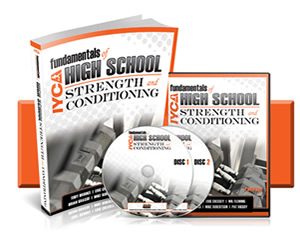

 Many high school and college-level athletes feel like they either need to get as big and strong as possible or they don’t value it at all. Some of that depends on the sport they play, and some depends on their environment or what their coaches value. We need to help athletes put strength/size into perspective, and teach them that these qualities should be developed as a PART of their overall development. In some cases, it’s a small part, and in other cases, it’s more important. But, concentrating ALL of your effort on lifting weights if usually not what athletes need.
Many high school and college-level athletes feel like they either need to get as big and strong as possible or they don’t value it at all. Some of that depends on the sport they play, and some depends on their environment or what their coaches value. We need to help athletes put strength/size into perspective, and teach them that these qualities should be developed as a PART of their overall development. In some cases, it’s a small part, and in other cases, it’s more important. But, concentrating ALL of your effort on lifting weights if usually not what athletes need.

 A highly athletic, low-skilled soccer player can easily get into position to make a play, but may not be able to take full advantage of the opportunity because of the low technical skills. On the other hand, a highly-skilled, low-athleticism player can control the ball, but won’t be able to get into position where their skills can best be utilized.
A highly athletic, low-skilled soccer player can easily get into position to make a play, but may not be able to take full advantage of the opportunity because of the low technical skills. On the other hand, a highly-skilled, low-athleticism player can control the ball, but won’t be able to get into position where their skills can best be utilized.